
漢德百科全書 | 汉德百科全书
 Lazio
Lazio
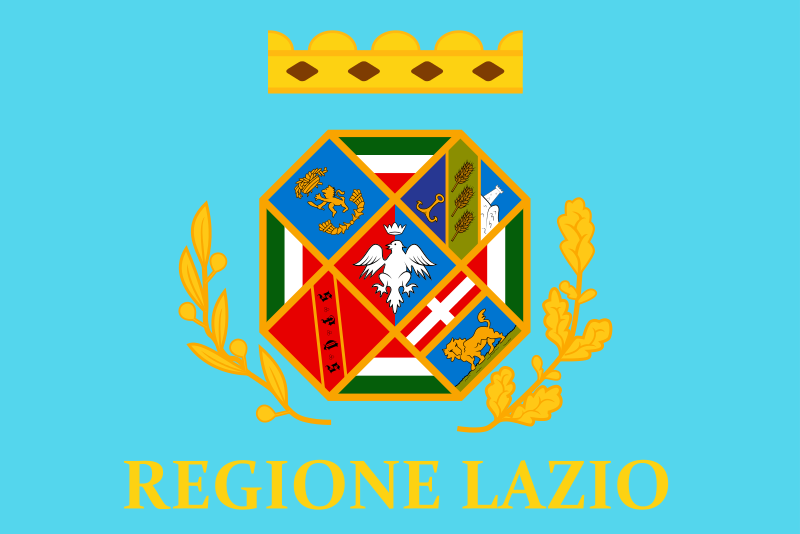
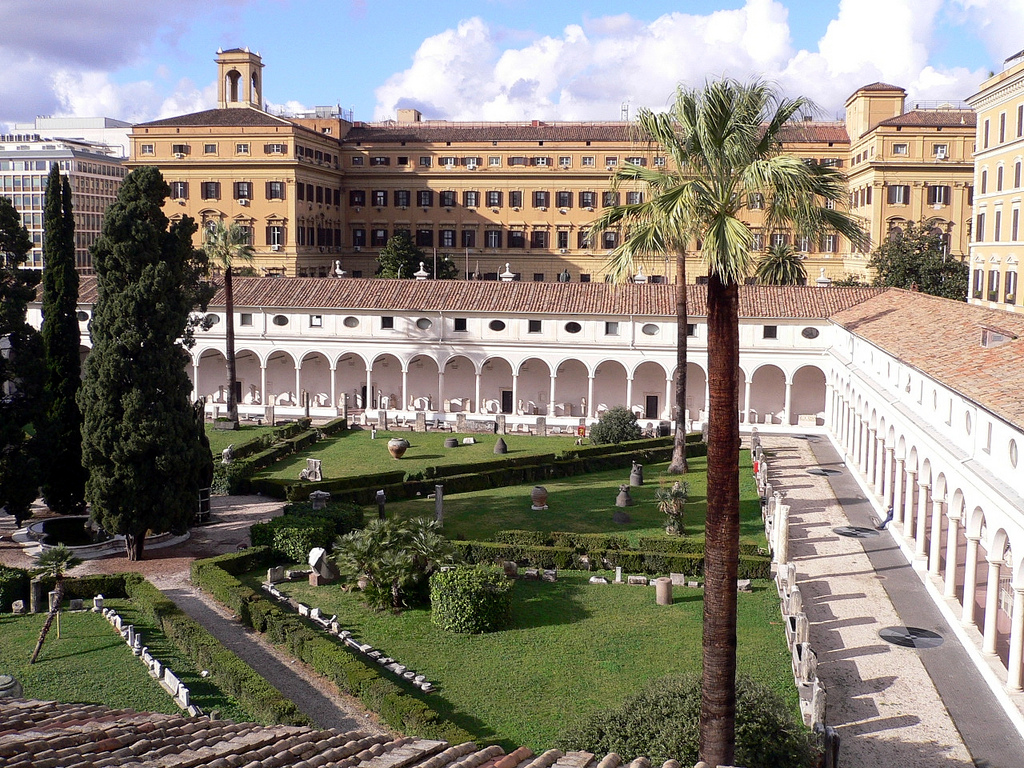
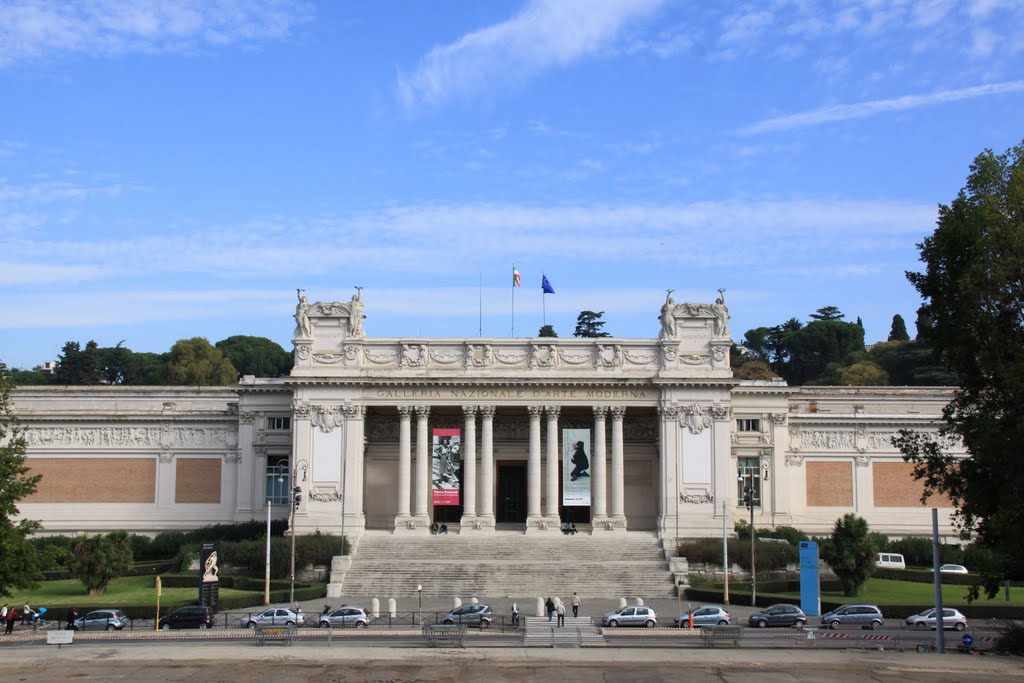
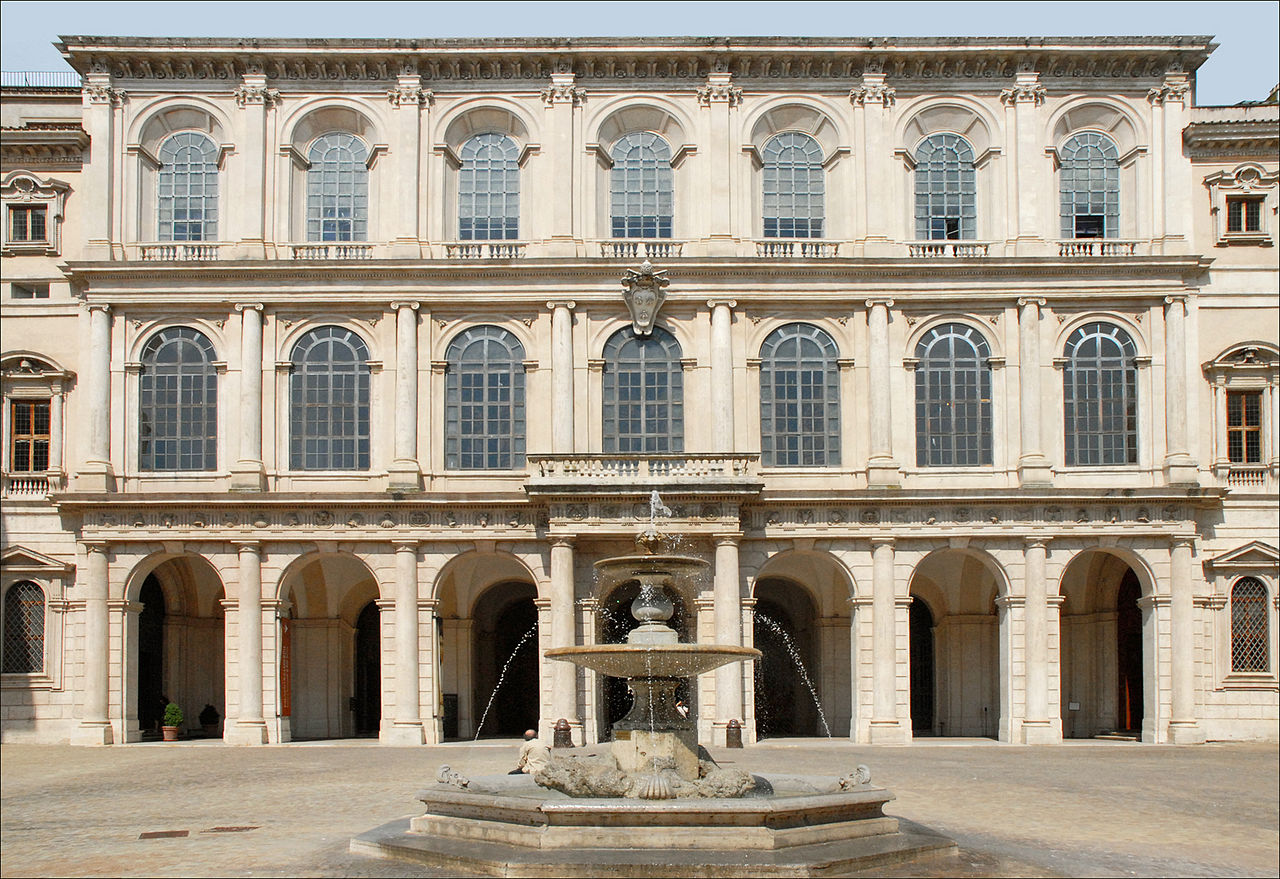
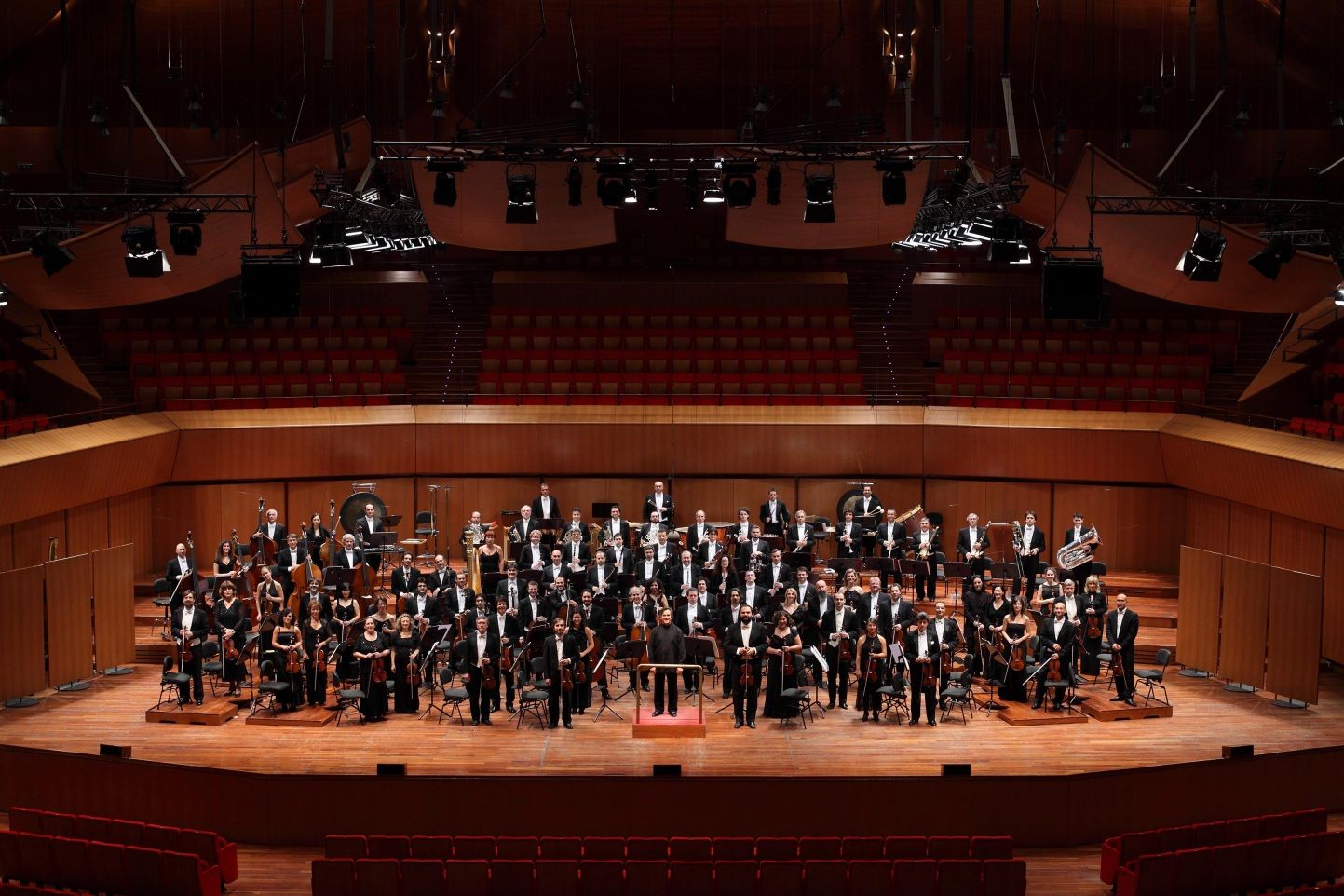
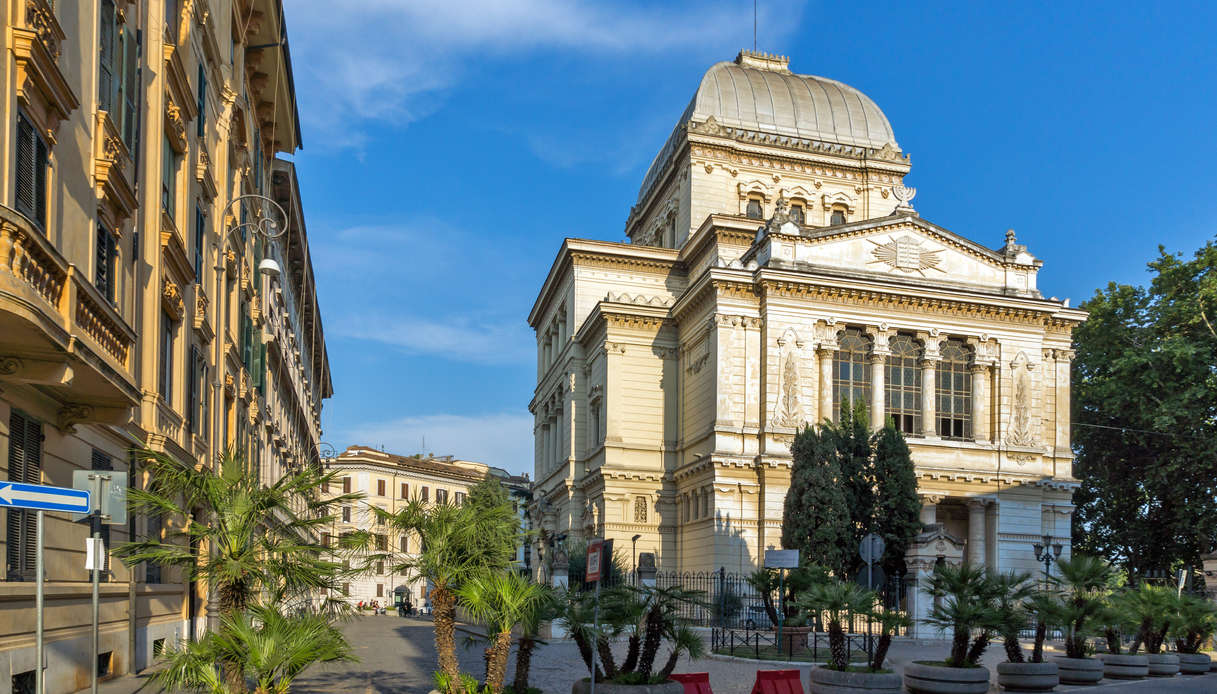
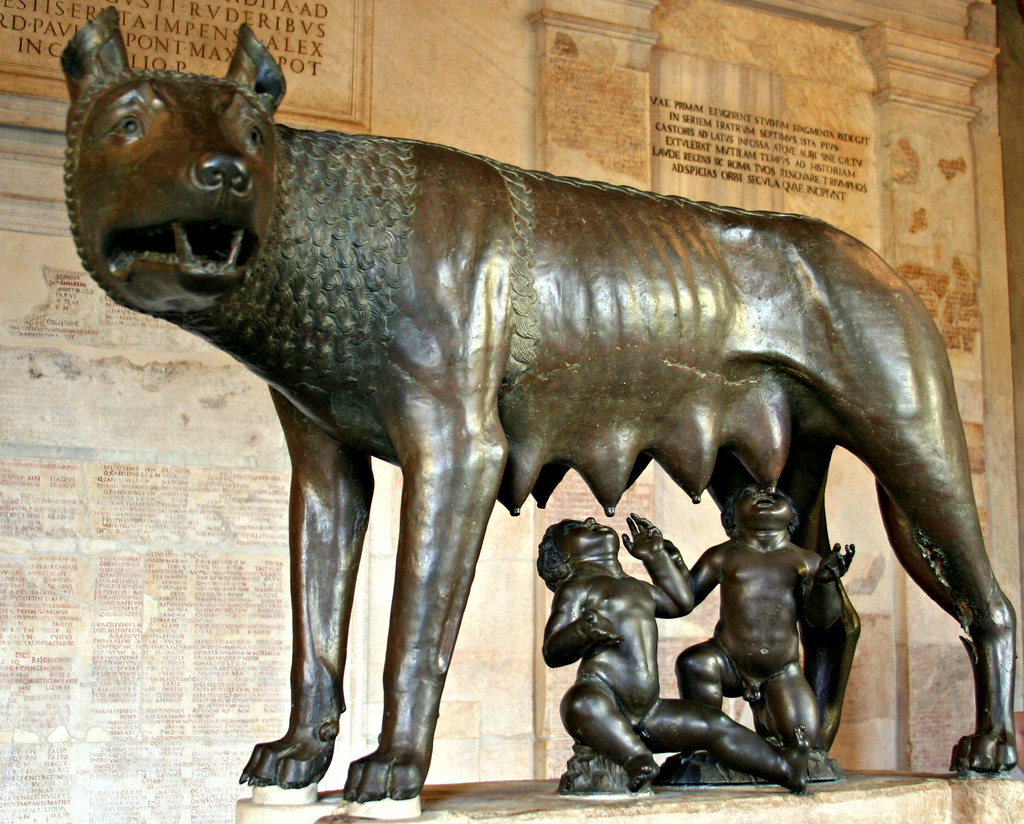
Romulus und Remus waren nach der römischen Mythologie die Gründer der Stadt Rom im Jahre 753 v. Chr. Sie waren nach der Sage die Kinder des Kriegsgottes Mars und der Priesterin Rhea Silvia.
罗慕路斯(拉丁语:Romulus,约前771年出生[注 1],约前717年7月5日逝世)与雷穆斯(Remus,约前771年出生,约前753年4月21日逝世)是罗马神话中罗马市的奠基人。在罗马神话中他们是一对双胞胎。他们的母亲是女祭司雷亚·西尔维亚,他们的父亲是战神玛尔斯。按照普鲁塔克和蒂托·李维等的传统罗马历史记载罗慕路斯是罗马王政时代的首位国王。
兄弟俩人后来因为就谁获得当地神的支持应该给新建的城市命名的问题而发生争执,甚至爆发战斗,结果罗慕路斯将雷穆斯杀死。此后罗慕路斯还创立了罗马元老院。通过抢劫附近的萨宾人的妇女他为新建的城市增加了人口,由此将罗马人与萨宾人融合为一个民族。罗慕路斯成为古罗马最大的征服者,将大量地区及其居民纳入罗马的统治范围。
罗慕路斯死后他被提升为象征罗马人的神奎利努斯。大多数人认为罗慕路斯和雷穆斯是传说人物,他们是从罗马这个名字引申出来的,而罗马原来可能是“河流”的意思。但是也有一些学者认为罗慕路斯的确是一个历史人物。这个理论的原因之一是1988年在罗马市帕拉蒂尼山北坡发现的“罗慕路斯墙”(Murus Romuli)[1]。

 Architecture
Architecture
 Eurovision Song Contest,ESC
Eurovision Song Contest,ESC
 FIFA Fussball-Weltmeisterschaft 1990
FIFA Fussball-Weltmeisterschaft 1990
 UEFA European Championship 2020
UEFA European Championship 2020

 History
History
 Italy
Italy

 Lazio
Lazio
 Rom
Rom
 Olympic Summer Games
Olympic Summer Games
 1960 Summer Olympics
1960 Summer Olympics
 Silk road
Silk road

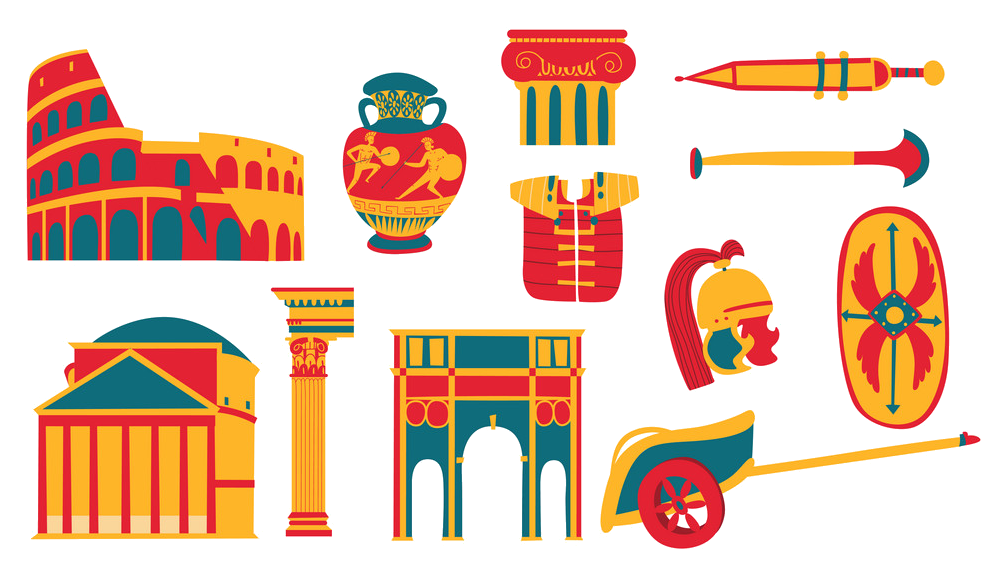 Cities founded by the Romans
Cities founded by the Romans

Rom (lateinisch Rōma; italienisch Roma [ˈroːma]), amtlich Roma Capitale, ist die Hauptstadt Italiens.[2] Mit etwa drei Millionen Einwohnern im Stadtgebiet bzw. rund vier Millionen Einwohnern in der Agglomeration ist sie die größte Stadt Italiens. Rom liegt in der Region Latium an den Ufern des Flusses Tiber.
Rom wurde erstmals im 1. Jahrhundert v. Chr. vom Dichter Tibull[3] Ewige Stadt genannt. Diese Bezeichnung, ursprünglich eine Antonomasie, wurde zu einem Ehrennamen für die Stadt wegen der Bedeutung in ihrer bis heute drei Jahrtausende umspannenden Geschichte.
Sie ist heute Verwaltungssitz der Region Latium und der Metropolitanstadt Rom, bis 2015 Provinz Rom. Innerhalb der Stadt bildet der unabhängige Staat der Vatikanstadt eine Enklave. Der Vatikan ist der Sitz des Papstes, das heißt des Bischofs von Rom und Oberhaupts der römisch-katholischen Kirche sowie des Heiligen Stuhls. Zudem ist Rom seit 1834 Sitz des Malteser-Ritterordens, der ein eigenständiges (jedoch nichtstaatliches) Völkerrechtssubjekt ist, sowie der UNO-Unterorganisationen FAO, IFAD und WFP.
Rom ist außerordentlich reich an bedeutenden Bauten und Museen und Ziel zahlreicher Touristen. Die Altstadt von Rom, der Petersdom und die Vatikanstadt wurden von der UNESCO im Jahr 1980 zum Weltkulturerbe erklärt.[4]
In einer Rangliste der Städte nach ihrer Lebensqualität belegte Rom im Jahre 2018 den 57. Platz unter 231 untersuchten Städten weltweit.[5]
罗马(意大利语:Roma)是意大利首都及全国政治、经济、文化和交通中心,是世界著名的历史文化名城,古罗马文明的发祥地,因建城历史悠久并保存大量古迹而被昵称为“永恒之城”[1][2]。其位于意大利半岛中西部,台伯河下游平原地的七座小山丘上,市中心面积有1200多平方公里。罗马同时是全世界天主教会的中枢,拥有700多座教堂与修道院、7所天主教大学,市内的梵蒂冈城是罗马主教即天主教会教宗及圣座的驻地。罗马与佛罗伦萨同为意大利文艺复兴中心[3],现今仍保存有相当丰富的文艺复兴与巴洛克风貌;1980年,罗马的历史城区被列为世界文化遗产[4]。
ローマ(伊: Roma、羅: Roma)は、イタリアの首都。欧州有数の世界都市であり、ラツィオ州の州都、ローマ県のコムーネの一つで、ローマ県の県都でもある。英語とフランス語の表記は「Rome」。
イタリアの首都で政治、経済、文化の中心地である。当市に囲まれるようにローマ教皇の居住するバチカン市国があり、そこは全世界のカトリック教徒にとっての中心地で、現在は外国であるが歴史・宗教・文化的にはローマ市地域と密接な関わりがある。そして昔のローマの大国さを表した「ローマは一日にして成らず」という諺もある。また、領土を持たないマルタ騎士団の本部、マルタ宮殿がコンドッティ通り68にあり、治外法権が認められている。
2014年現在の人口は約286万人で、イタリアで最も人口が多い都市である。2010年の都市的地域の人口では271万人であり、世界128位である[4]。 かつてのローマ帝国の首都であったため西洋文明圏を代表する都市のひとつであり、カトリック教会の中枢であり、そしてまたその美しさから『永遠の都』と称される。
2014年、アメリカのシンクタンクが公表したビジネス、人材、文化、政治などを対象とした総合的な世界都市ランキングにおいて、世界第32位の都市と評価されており、イタリアの都市では第1位であった[5]。
観光都市としての側面もあり、2012年には7,800,000人の観光客が訪れた[6]。後述の「観光」、「聖地として」も参照。
Rome (Italian: Roma  i[ˈroːma]; Latin: Roma [ˈroːma]) is the capital city of Italy and a special comune (named Comune di Roma Capitale). Rome also serves as the capital of the Lazio region. With 2,872,800 residents in 1,285 km2 (496.1 sq mi),[1] it is also the country's most populated comune. It is the fourth-most populous city in the European Union by population within city limits. It is the centre of the Metropolitan City of Rome, which has a population of 4.3 million residents.[2] Rome is located in the central-western portion of the Italian Peninsula, within Lazio (Latium), along the shores of the Tiber. The Vatican City is an independent country inside the city boundaries of Rome, the only existing example of a country within a city: for this reason Rome has been often defined as capital of two states.[3][4]
i[ˈroːma]; Latin: Roma [ˈroːma]) is the capital city of Italy and a special comune (named Comune di Roma Capitale). Rome also serves as the capital of the Lazio region. With 2,872,800 residents in 1,285 km2 (496.1 sq mi),[1] it is also the country's most populated comune. It is the fourth-most populous city in the European Union by population within city limits. It is the centre of the Metropolitan City of Rome, which has a population of 4.3 million residents.[2] Rome is located in the central-western portion of the Italian Peninsula, within Lazio (Latium), along the shores of the Tiber. The Vatican City is an independent country inside the city boundaries of Rome, the only existing example of a country within a city: for this reason Rome has been often defined as capital of two states.[3][4]
Rome's history spans 28 centuries. While Roman mythology dates the founding of Rome at around 753 BC, the site has been inhabited for much longer, making it one of the oldest continuously occupied sites in Europe.[5] The city's early population originated from a mix of Latins, Etruscans, and Sabines. Eventually, the city successively became the capital of the Roman Kingdom, the Roman Republic and the Roman Empire, and is regarded as the birthplace of Western civilisation and by some as the first ever metropolis.[6] It was first called The Eternal City (Latin: Urbs Aeterna; Italian: La Città Eterna) by the Roman poet Tibullus in the 1st century BC, and the expression was also taken up by Ovid, Virgil, and Livy.[7][8] Rome is also called the "Caput Mundi" (Capital of the World). After the fall of the Western Empire, which marked the beginning of the Middle Ages, Rome slowly fell under the political control of the Papacy, which had settled in the city since the 1st century AD, until in the 8th century it became the capital of the Papal States, which lasted until 1870. Beginning with the Renaissance, almost all the popes since Nicholas V (1447–1455) pursued over four hundred years a coherent architectural and urban programme aimed at making the city the artistic and cultural centre of the world.[9] In this way, Rome became first one of the major centres of the Italian Renaissance,[10] and then the birthplace of both the Baroque style and Neoclassicism. Famous artists, painters, sculptors and architects made Rome the centre of their activity, creating masterpieces throughout the city. In 1871, Rome became the capital of the Kingdom of Italy, which, in 1946, became the Italian Republic.
Rome has the status of a global city.[11][12][13] In 2016, Rome ranked as the 14th-most-visited city in the world, 3rd most visited in the European Union, and the most popular tourist attraction in Italy.[14] Its historic centre is listed by UNESCO as a World Heritage Site.[15] Monuments and museums such as the Vatican Museums and the Colosseum are among the world's most visited tourist destinations with both locations receiving millions of tourists a year, and the city hosted the 1960 Summer Olympics. Rome is the seat of several specialized agencies of the United Nations, such as the Food and Agriculture Organization (FAO), the World Food Programme (WFP) and the International Fund for Agricultural Development (IFAD). The city hosts the headquarters of many international business companies, such as Eni, Enel, TIM, Leonardo S.p.A., and national and international banks such as Unicredit and BNL. Its business district, called EUR, is the base of many companies involved in the oil industry, the pharmaceutical industry, and financial services. Rome is also an important fashion and design centre thanks to renowned international brands centered in the city. Rome's Cinecittà Studios have been the set of many Academy Award–winning movies.
Roma (AFI: /ˈroma/[5], pronuncia[?·info]) è la capitale della Repubblica Italiana, nonché capoluogo dell'omonima città metropolitana e della regione Lazio. La città è dotata di un ordinamento amministrativo speciale, denominato Roma Capitale, disciplinato da una legge dello Stato.[6]
Con 2 869 322 abitanti è il comune più popoloso d'Italia e il quarto dell'Unione europea,[3] mentre con 1 287,36 km² è il comune più esteso d'Italia e la quinta città più estesa d'Europa dopo Mosca, Istanbul, Londra e San Pietroburgo. È inoltre la città europea con la maggiore superficie di aree verdi[7].
Fondata secondo la tradizione il 21 aprile del 753 a.C. (sebbene scavi recenti nel Lapis Niger farebbero risalire la fondazione a 2 secoli prima[8][9]), nel corso dei suoi tre millenni di storia è stata la prima metropoli dell'umanità,[10] cuore pulsante di una delle più importanti civiltà antiche, che influenzò la società, la cultura, la lingua, la letteratura, l'arte, l'architettura, la filosofia, la religione, il diritto e i costumi dei secoli successivi. Luogo di origine della lingua latina, fu capitale dell'Impero romano che estendeva il suo dominio su tutto il bacino del Mediterraneo e gran parte dell'Europa, dello Stato Pontificio, sottoposto al potere temporale dei papi e del Regno d'Italia (dal 1871 al 1946). Per antonomasia, è definita l'Urbe, Caput Mundi e Città eterna.
Il suo centro storico, delimitato dal perimetro delle mura aureliane, sovrapposizione di testimonianze di quasi tre millenni è espressione del patrimonio storico, artistico e culturale del mondo occidentale europeo[11] e, nel 1980, insieme alle proprietà extraterritoriali della Santa Sede nella città, è stato inserito nella lista dei Patrimoni dell'umanità dell'UNESCO, provvedimento esteso nel 1990 ai territori compresi all'interno delle mura gianicolensi, edificate per volere di papa Urbano VIII.[12][13]
Roma, cuore della cristianità cattolica, è l'unica città al mondo ad ospitare al proprio interno un intero Stato, l'enclave della Città del Vaticano:[14] per tale motivo è spesso definita capitale di due Stati.[15][16]
Rome (en italien : Roma, prononcé [ˈroˑma]) est la capitale de l'Italie depuis 1871. Située au centre-ouest de la péninsule Italienne, près de la mer Tyrrhénienne, elle est également la capitale de la région du Latium, et fut celle de l'Empire romain durant 357 ans. En 2016, elle compte 2 877 215 habitants établis sur 1 285 km2, ce qui fait d'elle la commune la plus peuplée d'Italie et la troisième plus étendue d'Europe après Moscou et Londres1. Son aire urbaine recense 4 356 403 habitants en 20162,3. Elle présente en outre la particularité de contenir un État enclavé dans son territoire : la cité-État du Vatican (Stato della Città del Vaticano), dont le pape est le souverain. C'est le seul exemple existant d'un État à l'intérieur d'une ville.
L'histoire de Rome s'étend sur plus de vingt-huit siècles, depuis sa fondation mythique par Romulus en 753 av. J.-C. jusqu'à son rôle actuel de capitale de la république italienne. Second berceau de la civilisation occidentale après Athènes, la ville fut successivement le centre de la monarchie romaine, de la république romaine (509 av. J.-C. – 27 av. J.-C.), puis de l'Empire romain (27 av. J.-C. – 330). Durant cette période, où nait la célèbre expression proverbiale « tous les chemins mènent à Rome », la ville aurait compté entre un et deux millions d'habitants et domine l'Europe, l'Afrique du Nord et le Moyen-Orient tant militairement que culturellement, diffusant dans ces territoires la langue latine, ses arts et techniques ainsi que la religion chrétienne. Depuis le Ier siècle elle abrite le siège de l'Église catholique romaine, au sein des États pontificaux (752-1870) puis de la Cité du Vatican.
Considérablement agrandie par de grands travaux sous Jules César et surtout sous Auguste, la ville est partiellement détruite lors du Grand incendie de Rome - le Circus Maximus notamment. À partir du XVe siècle, presque tous les papes depuis Nicolas V (1447-1455) perpétuent la tradition de l'architecture romaine et ambitionnent de faire de Rome le principal centre culturel et artistique de l'Occident. La ville devient l'un des foyers de la Renaissance italienne, avec Florence et Venise, et donne naissance au style baroque - dont témoigne encore son centre historique, classé par l'UNESCO comme site du patrimoine mondial4. Des artistes comme Michel-Ange, Raphaël ou Le Bernin s'y installent et produisent des œuvres telles que la basilique Saint-Pierre, la chapelle Sixtine, la fontaine de Trevi, le Capitole ou les Chambres de Raphaël. Au XIXe siècle, Rome est le symbole de l'unité italienne et devient la capitale du Royaume d'Italie, puis de la République après la Seconde Guerre mondiale.
Ville globale, Rome est la troisième destination touristique la plus visitée d'Europe derrière Londres et Paris5. La Ville Éternelle est l'une des plus belles villes du monde, et fréquentée par les touristes depuis le XVIIIe siècle. Le siège de la papauté et le pèlerinage de Rome en font un lieu éminent pour les chrétiens du monde entier depuis des siècles. Les musées du Vatican et le Colisée sont parmi les sites les plus fréquentés. Rome est aussi l'un des plus grands sites archéologiques du monde, et compte également de nombreux ponts et fontaines, 900 églises, ainsi qu'un grand nombre de musées et d'universités. Outre le tourisme, l'économie de la « Ville Éternelle » est également orientée vers les nouvelles technologies, les médias et les télécommunications depuis les années 2000. Bâtie sur sept collines, la ville se situe près de l'embouchure du Tibre et est divisée en vingt-deux rioni. Rome a aussi organisé les Jeux olympiques d'été en 1960. Rome n'est jumelée qu'avec une seule autre ville, Paris, ce qui est vrai dans l'autre sens, avec ce slogan : « Seul Paris est digne de Rome, seule Rome est digne de Paris ».
Roma es una ciudad italiana de 2 877 215 habitantes,23 capital de la región del Lacio y de Italia. Es el municipio más poblado de Italia y es la cuarta ciudad más poblada de la Unión Europea.4 Por antonomasia se la conoce desde fines de la Antigüedad como la Urbe. También es llamada "La Ciudad Eterna" (en italiano: Città Eterna).
En el transcurso de su historia, que abarca tres milenios, llegó a extender sus dominios sobre toda la cuenca del Mediterráneo y gran parte de Europa. Como capital del Imperio romano, se constituyó en una de las primeras grandes metrópolis de la humanidad, centro de una de las civilizaciones antiguas más importantes. Influyó en la sociedad, la cultura, la lengua, la literatura, el arte, la arquitectura, la filosofía, la religión, el derecho y la moral de los siglos sucesivos.
Es la ciudad con la más alta concentración de bienes históricos y arquitectónicos del mundo;5 su centro histórico delimitado por el perímetro que marcan las murallas aurelianas, superposición de huellas de tres milenios, es la expresión del patrimonio histórico, artístico y cultural del mundo occidental europeo.6 En 1980, junto a las propiedades extraterritoriales de la Santa Sede que se encuentran en la ciudad y la Basílica de San Pablo Extramuros, fue incluida en la lista del Patrimonio de la Humanidad de la Unesco.78
Roma es el corazón geográfico de la religión católica y destino de peregrinación (vías romeas) y también la única ciudad del mundo que tiene en su interior un Estado extranjero: el enclave de la Ciudad del Vaticano, que se encuentra bajo el poder temporal del papa.9 Por tal motivo se le ha conocido también como la capital de dos Estados.
Рим (итал. Roma [ˈroːma]) — столица и крупнейший город Италии. Административный центр области Лацио и провинции Рим. Расположен на реке Тибр.
Рим — один из старейших городов мира, древняя столица Римской империи. Ещё в Античности (III век н. э.) Рим стали часто называть Вечным (лат. Roma Aeterna). Одним из первых так назвал Рим римский поэт Альбий Тибулл (I век до н. э.) в своей второй элегии. Представления о «вечности» Рима во многом сохранились и после падения древнеримской цивилизации, принеся соответствующий эпитет в современные языки.
Также Рим называют «городом на семи холмах». Первоначально поселения располагались на холме Палатине, впоследствии были заселены соседние холмы: Капитолий и Квиринал. Несколько позже поселения появились на последних четырёх холмах (Целие, Авентине, Эсквилине и Виминале).

Veranstaltungen Leichtathletik: Olympische Sommerspiele 1960 Europameisterschaften 1974 Golden Gala (seit 1980, Diamond League) Weltmeisterschaften 1987 Europameisterschaften 2024 Fußball: Fußball-Europameisterschaft 1968 Weltpokal 1973 Fußball-Europameisterschaft 1980 Finale Europapokal der Landesmeister 1976/77 Finale Europapokal der Landesmeister 1983/84 Fußball-Weltmeisterschaft 1990 Finale UEFA Champions League 1995/96 Clericus Cup (seit 2007) Finale Coppa Italia (seit 2008) Finale UEFA Champions League 2008/09 Fußball-Europameisterschaft 2021 Rugby: Six Nations (seit 2012) Sonstiges: Konzerte

罗马斗兽场(意大利语:Colosseo,又译作罗马斗兽场、罗马大角斗场、科洛西姆或哥罗塞姆;原名弗莱文圆形剧场,拉丁语:Anfiteatro Flavio / Amphitheatrvm falvvm)是古罗马时期最大的圆形角斗场,建于公元72年-82年间,现仅存遗迹位于现今意大利罗马市的中心。[1]罗马斗兽场是卵形的圆形剧场,也是目前最大的圆形剧场,使用材料包括洞石、凝灰岩及砖饰面的混凝土[2]。
罗马斗兽场估计可以容纳五万至八万名观众[3][4],平均观众约六万五千人[5][6]。罗马斗兽场用来进行角斗士的比赛、海战表演(不过只有短暂的时间,后来斗兽场地下室就开始安装其他的设备了)、处决、重要战役的历史重演、以及演出以罗马神话为基础的戏剧。在中世纪前期已不再将罗马斗兽场用在娱乐用途,后来用作住宅、工作坊、圣职人员宿舍、防御工事、采石场以及基督教圣地等用途。
罗马斗兽场中有部分因为地震以及盗石贼的破坏而受损,不过仍然是罗马帝国的代表性建筑物。罗马斗兽场是罗马著名的旅游景点之一,也和天主教教会有关,教宗在每年圣周五带领的苦路游行都会从罗马斗兽场附近开始[7]。意大利版本的5欧分硬币上面就是以罗马斗兽场为主题。罗马斗兽场也列名在中古世界七大奇迹及世界新七大奇迹中。1980年,罗马竞技场以罗马历史中心,该城中享有治外法权的圣座房地产和城外圣保禄大殿之名被联合国教科文组织列入世界文化遗产[8]。
Das Kolosseum (antiker Name: Amphitheatrum Novum oder Amphitheatrum Flavium, italienisch: Colosseo, Anfiteatro Flavio) ist das größte der im antiken Rom erbauten Amphitheater, der größte geschlossene Bau der römischen Antike und weiterhin das größte je gebaute Amphitheater der Welt. Zwischen 72 und 80 n. Chr. errichtet, diente das Kolosseum als Austragungsort zumeist höchst grausamer und brutaler Veranstaltungen, die von Mitgliedern des Kaiserhauses zur Unterhaltung und Belustigung der freien Bewohner Roms und des römischen Reichs bei kostenlosem Eintritt ausgerichtet wurden. Heute ist die Ruine des Bauwerks eines der Wahrzeichen der Stadt und zugleich ein Zeugnis für die hochstehende Baukunst der Römer in der Antike.

罗马七座山丘位于罗马心脏地带台伯河东侧。根据罗马神话,其为罗马建城之初的重要宗教与政治中心,所以罗马被称为“七丘之城”,当时的七座山分别为凯马路斯(Cermalus)、契斯庇乌斯(Cispius)、法古塔尔(Fagutal)、奥庇乌斯(Oppius)、帕拉蒂尼(Palatium)、苏古沙(Sucusa)与威利亚(Velia);而传说中罗马城最初是由罗慕路斯(Romulus)于帕拉提诺山(Collis Palatinus)上兴建。而现在其余六座山则与古代的称呼有所不同,分别为阿文提诺山(Collis Aventinus)、卡比托利欧山(Capitolinus)、奎利那雷山(Quirinalis)、维米那勒山(Viminalis)、埃斯奎利诺山(Esquilinus)与西里欧山(Caelius)。
在最初时,这七座山丘分别为不同的人群所占有,且并没有组合成“罗马城”的念头。而在其后,这七座山丘的居民开始共同参与一系列的宗教活动,并且逐渐组合起来。罗马城就这样逐渐成形,而居民们则将山丘间的沼泽地清理,并且在该处兴建市场与法庭。
现今普世知名的梵蒂冈山(Vaticano,由拉丁文Collis Vaticanus一词转化而来)位处台伯河西北岸,因此并不是七座山丘之一。与此相似,宾西亚丘陵(Pincio,由拉丁文Mons Pincius一词转化而来)位处台伯河北岸、雅尼库伦山(Gianicolo,由拉丁文Ianiculum一词转化而来)位处台伯河西岸,因此传统上皆不被认为是七座山丘之一。
现代罗马城的七座山丘里,其中五座(阿文庭山、西莲山、埃斯奎里山、奎里尔诺山、维弥纳山)有着纪念碑、建筑物与公园;卡匹托尔山则为罗马市政中心;而帕拉蒂尼山则是考古地区。
Die Sieben Hügel Roms (lateinisch Septem montes Romae, altgriechisch ἄστυ ἑπτάλοφον ásty heptálophon) sind sieben östlich des Tiber liegende Anhöhen auf dem Gebiet der heutigen italienischen Hauptstadt Rom, die einst für die Siedlungsgeschichte und Stadttopografie bestimmend waren. Sie wurden nach der Zerstörung der Stadt durch die Gallier 387 v. Chr. mit der Servianischen Mauer umgeben, die damit das Stadtgebiet gegenüber der Umgebung eindeutig markierte.
Obgleich kein einheitlicher antiker Katalog überliefert ist, werden klassischerweise zu den Sieben Hügeln Roms gezählt:
Durch die Servianische Mauer kamen als letzte Anhöhen der Caelius und der Quirinal hinzu, so dass die Liste fünf montes und zwei colles umfasst. In späteren Aufzählungen wurden beispielsweise das Kapitol oder auch der Palatin durch das Ianiculum ersetzt.[1] Im Regionenkatalog des 4. Jahrhunderts zählten zu den sieben Hügeln Roms hingegen Caelius, Aventinus, Tarpeius (= Kapitol), Palatinus, Esquilin, Vaticanus und Ianiculum; Quirinal und Viminal machten dem Vaticanus und Ianiculum Platz.[2]
Neben den genannten gehörte nicht zu den klassischen sieben Hügeln unter anderem der Pincio, 54 m, der wie Ianiculum und Vaticanus außerhalb des antiken Stadtzentrums liegt.
Die genannten sieben Hügel sind nicht identisch mit den sieben Hügeln des Septimontiums, auf denen um 1000 v. Chr. die Latiner erste Siedlungen errichteten: Suburba (eine Kuppe des Caelius), Palatium und Germalus (heute zusammen der Palatin), Velia sowie – als Erhebungen des Esquilins – Oppius, Cispius und Fagutal.
Weitere Erhebungen im engeren Stadtgebiet des heutigen Roms sind der Monte Parioli, 59 m, der Monte Antenne, 64 m, der Monte Mario, 139 m, der früher den aus Norden kommenden Rompilgern einen ersten Blick über die Stadt bot, und der Monte Testaccio, 49 m.

Die Moschee von Rom (italienisch Moschea di Roma) befindet sich im Norden der Stadt am Fuße des Monte Parioli, in der Gegend von Acqua Acetosa, und ist eine der größten Moscheen außerhalb der islamischen Länder. Die zentrale Gebetshalle kann etwa 2500 Gläubige aufnehmen.[1][2][3]
Die Moschee ist Sitz des Centro Culturale Islamico d'Italia (Islamisches Kulturzentrum Italien) und damit nicht nur eine religiöse Begegnungsstätte, sondern bietet auch kulturelle und soziale Dienste für sunnitische wie schiitische Muslime an. Es werden Hochzeiten, Trauerfeiern, Exegesen und andere religiöse Veranstaltungen abgehalten.
 Art
Art
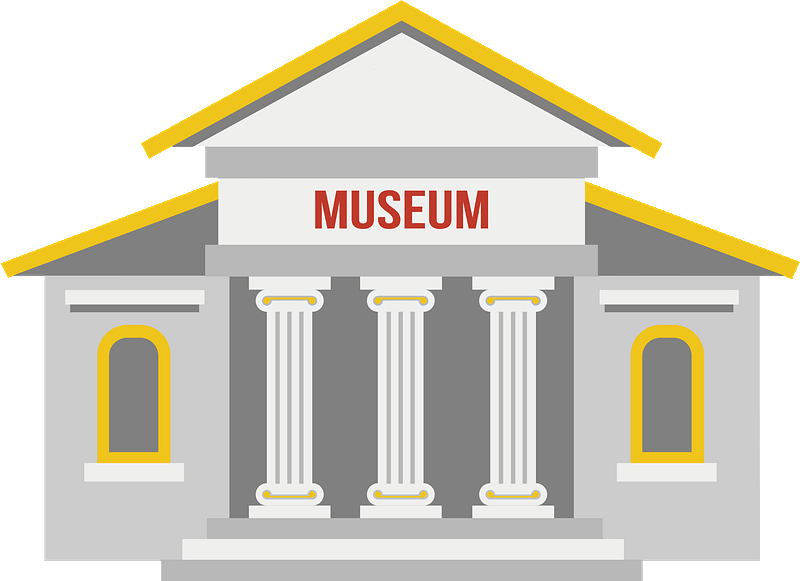 Museum
Museum
 Music
Music
 Performing Arts
Performing Arts
 Religion
Religion
 International cities
International cities
 Sport
Sport
 Transport and traffic
Transport and traffic

 Science and technology
Science and technology